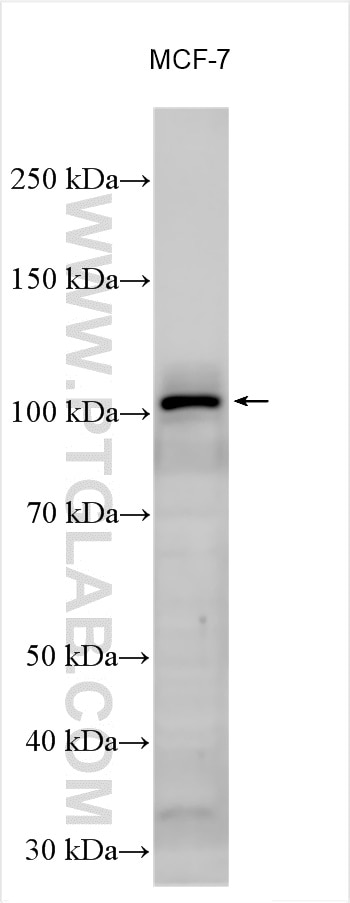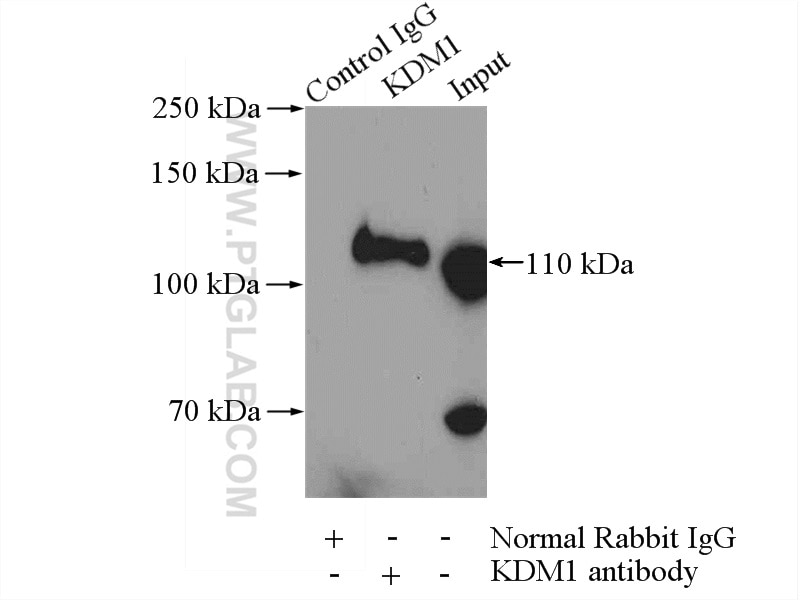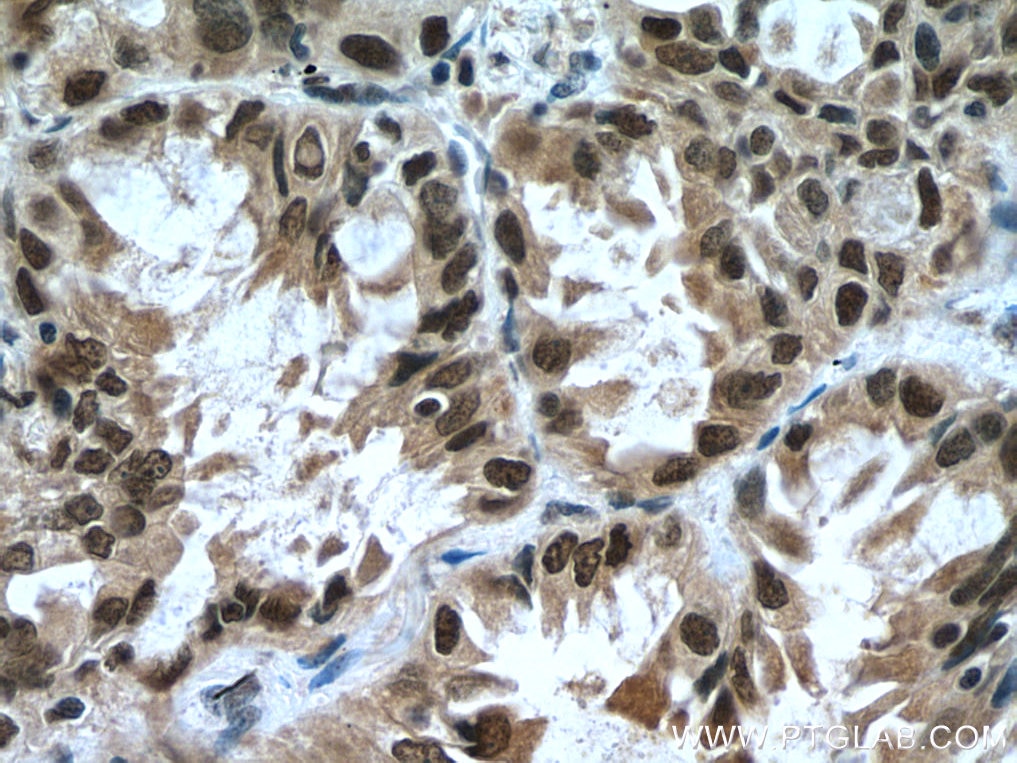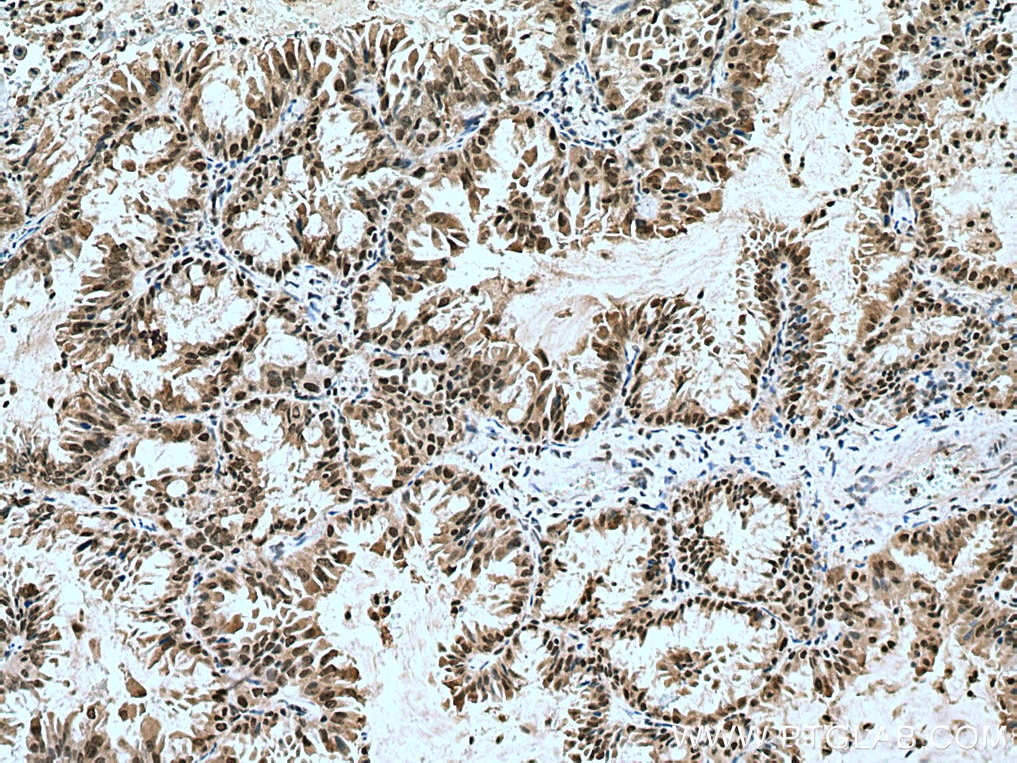- Phare
- Validé par KD/KO
Anticorps Polyclonal de lapin anti-KDM1
KDM1 Polyclonal Antibody for WB, IHC, IP, ELISA
Hôte / Isotype
Lapin / IgG
Réactivité testée
Humain, souris
Applications
WB, IHC, IP, ELISA
Conjugaison
Non conjugué
N° de cat : 20813-1-AP
Synonymes
Galerie de données de validation
Applications testées
| Résultats positifs en WB | cellules MCF-7, |
| Résultats positifs en IP | cellules HeLa |
| Résultats positifs en IHC | tissu de cancer du poumon humain, il est suggéré de démasquer l'antigène avec un tampon de TE buffer pH 9.0; (*) À défaut, 'le démasquage de l'antigène peut être 'effectué avec un tampon citrate pH 6,0. |
Dilution recommandée
| Application | Dilution |
|---|---|
| Western Blot (WB) | WB : 1:2000-1:16000 |
| Immunoprécipitation (IP) | IP : 0.5-4.0 ug for 1.0-3.0 mg of total protein lysate |
| Immunohistochimie (IHC) | IHC : 1:50-1:500 |
| It is recommended that this reagent should be titrated in each testing system to obtain optimal results. | |
| Sample-dependent, check data in validation data gallery | |
Applications publiées
| KD/KO | See 2 publications below |
| WB | See 10 publications below |
| IHC | See 1 publications below |
Informations sur le produit
20813-1-AP cible KDM1 dans les applications de WB, IHC, IP, ELISA et montre une réactivité avec des échantillons Humain, souris
| Réactivité | Humain, souris |
| Réactivité citée | Humain, souris |
| Hôte / Isotype | Lapin / IgG |
| Clonalité | Polyclonal |
| Type | Anticorps |
| Immunogène | KDM1 Protéine recombinante Ag14778 |
| Nom complet | lysine (K)-specific demethylase 1 |
| Masse moléculaire calculée | 876 aa, 95 kDa |
| Poids moléculaire observé | 110 kDa |
| Numéro d’acquisition GenBank | BC040194 |
| Symbole du gène | KDM1 |
| Identification du gène (NCBI) | 23028 |
| Conjugaison | Non conjugué |
| Forme | Liquide |
| Méthode de purification | Purification par affinité contre l'antigène |
| Tampon de stockage | PBS with 0.02% sodium azide and 50% glycerol |
| Conditions de stockage | Stocker à -20°C. Stable pendant un an après l'expédition. L'aliquotage n'est pas nécessaire pour le stockage à -20oC Les 20ul contiennent 0,1% de BSA. |
Informations générales
Lysine specific demethylase 1 (LSD1/BHC110/KIAA0601/p110b/AOF2/KDM1) is an amine oxidase that catalyzes histone demethylation via a flavin adenine dinucleotide (FAD)-dependent oxidative reaction(PMID:19703393). This protein belongs to the flavin monoamine oxidase family. Its structure and function is conserved from yeast to human and it is typically associated to CoREST, a corepressor protein, and histone deacetylases HDAC1 and HDAC2. Human LSD1 consists of 852 amino acids and comprises an N-terminal SWIRM domain, involved in protein interactions, and a C-terminal amine oxidase domain, which contains an insertion that forms the CoREST interacting site (the so-called tower domain )(PMID:20164337). It has 2 isoforms produced by alternative splicing with the calculated molecular mass of 93-95 kDa and apparent molecular mass of 110 kDa.
Protocole
| Product Specific Protocols | |
|---|---|
| WB protocol for KDM1 antibody 20813-1-AP | Download protocol |
| IHC protocol for KDM1 antibody 20813-1-AP | Download protocol |
| IP protocol for KDM1 antibody 20813-1-AP | Download protocol |
| Standard Protocols | |
|---|---|
| Click here to view our Standard Protocols |
Publications
| Species | Application | Title |
|---|---|---|
Cancer Res HBXIP and LSD1 Scaffolded by lncRNA Hotair Mediate Transcriptional Activation by c-Myc. | ||
Int J Mol Sci The Lysine Specific Demethylase-1 Negatively Regulates the COL9A1 Gene in Human Articular Chondrocytes.
| ||
iScience Matrix stiffness aggravates osteoarthritis progression through H3K27me3 demethylation induced by mitochondrial damage | ||
J Biol Chem The Deubiquitinase USP28 Maintains the Expression of the Transcription Factor MYCN and Is Essential in Neuroblastoma Cells | ||
Cancer Cell Int 4,5-Dimethoxycanthin-6-one is a novel LSD1 inhibitor that inhibits proliferation of glioblastoma cells and induces apoptosis and pyroptosis. |
Avis
The reviews below have been submitted by verified Proteintech customers who received an incentive for providing their feedback.
FH Veronica (Verified Customer) (06-03-2025) | Needs improvement. Can work for total extrct but I won' recommend it for testing mitochondria isolation purity or nuclei isolation.
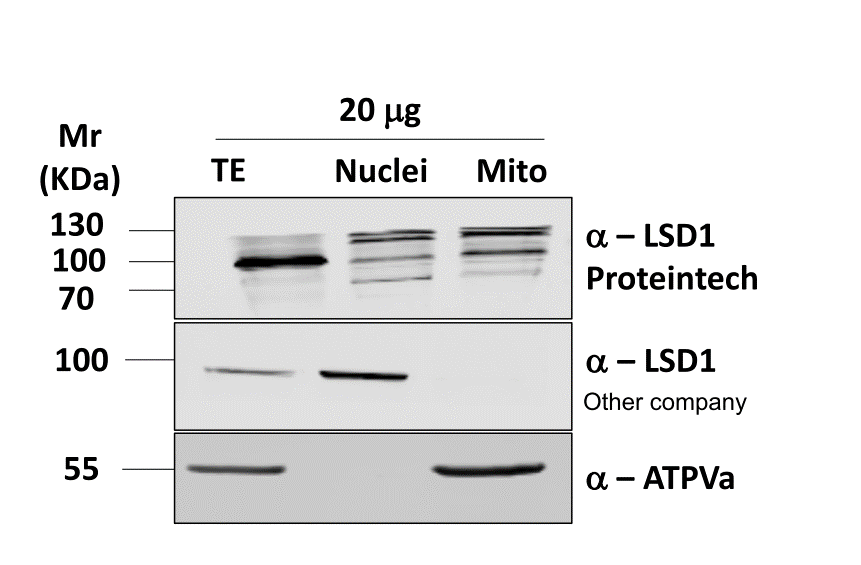 |
